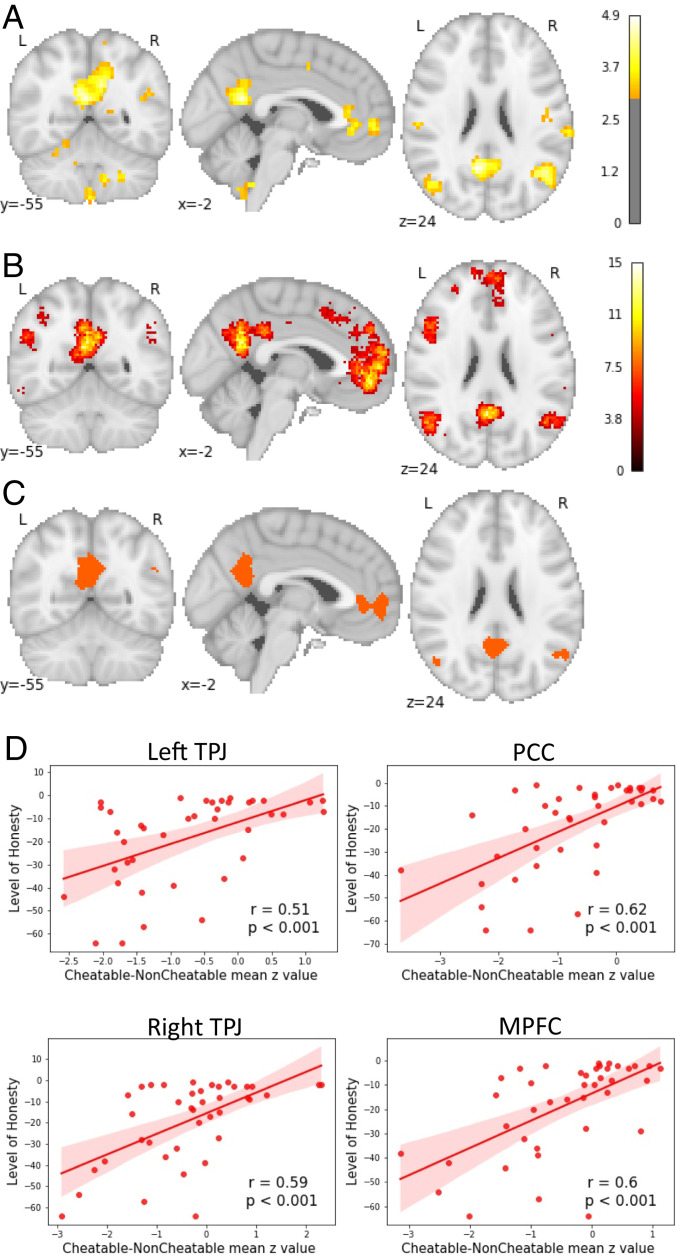Fig. 2.
Honest participants engage the self-referential thinking network more strongly than cheaters when exposed to the opportunity to cheat. (A) More honest participants exhibit greater activation in the PCC, MPFC, and bilateral TPJs when exposed to the opportunity to cheat. (B) Self-referential thinking mask obtained from Neurosynth. (C) Neural overlap between group level results for cheatable vs. noncheatable trials correlated with cheat count and the self-referential thinking mask obtained from Neurosynth. (D) The correlation between the level of honesty (reversed cheat count) and neural activation when participants were exposed to the opportunity to cheat as contrasted to no opportunity trials, for the PCC, bilateral TPJs, and the MPFC (using ROIs obtained from the conjunction analysis).

